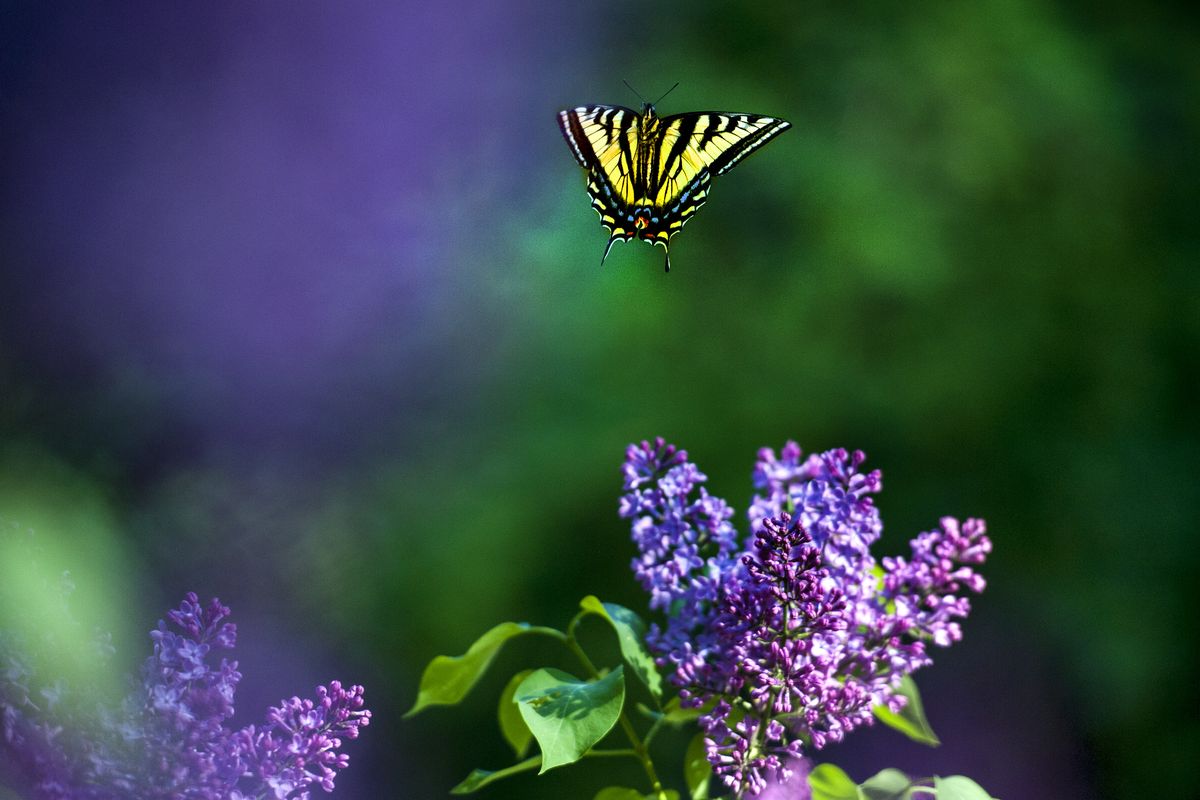Ask Dr. Universe: What are butterfly wings made of?

By Washington State University
Dr. Universe: What are butterfly wings made of? – Serenity, 12
Dear Serenity,
Butterfly wings may be quite thin, but they are also durable and strong. This strength comes from the material that makes up the wings: chitin (pronounced kite-in).
Chitin is a kind of building material we find in nature. Chitin makes up not only the wings of butterflies but also the outer skeletons – or exoskeletons – of crabs, shrimp and lots of other insects.
My friend David James, an entomologist at Washington State University, told me all about it.
He said that chitin is a bit like the strong keratin material that makes up your hair and fingernails. Of course, butterfly wings are much thinner than a fingernail. These thin, light wings help the butterflies float and fly through the air.
“They’re wafer thin, and there’s not much to them, but they allow the butterfly to migrate sometimes thousands of miles,” James said.
A butterfly’s wings are also covered in lots of tiny scales. You read that right. Butterflies have scaly wings.
“The scales are overlapping like the tiles on a roof,” James said. “They can come in many colors.”
These scales are also made of chitin. In fact, the butterfly’s head and abdomen are made of chitin, too. It’s one of the basic materials in the outer parts of most insect bodies.
James added that one misconception some people have about butterflies is that they can’t fly when the scales come off their wings. Of course, butterflies are delicate and should be treated gently, but they can also be pretty tough.
“Sometimes, you see butterflies that are completely beat up, tattered and the colors have gone, but they’re still flying and able to move around,” James said.
The colorful scales don’t really help with flight, but they can help the butterflies survive in the wild in other ways.
Some wing colors can help butterflies blend into their environments and help them hide from predators. Bright colors on butterfly wings can send a signal to predators that the butterfly is poisonous and should not be eaten. The different colors and patterns may also help a butterfly attract a mate.
When a butterfly is forming in a chrysalis, its wings are usually one of the last things to develop. As a butterfly comes out of a chrysalis, its wings are wrinkly and wet.
James said this is the most vulnerable time for a butterfly because its wings are not hardened yet. Usually, butterflies will emerge early in the morning to hopefully avoid any birds who might be looking for their next meal.
It takes a few hours for the wings to dry and for the hemolymph – the insect’s blood – to pump through its veins. The veins help give the wings shape and structure. Then, when the time is right, the wings expand, and the butterfly is ready to take flight.
The next time you see a butterfly fluttering past you, see if you can catch a glimpse of its wings. Who knows, maybe you will become a scientist one day and help us learn more about the amazing world of insects.
Sincerely,
Dr. Universe
Know a kid with a science question? Adults can help kids submit a question at askdruniverse.wsu.edu/ask.